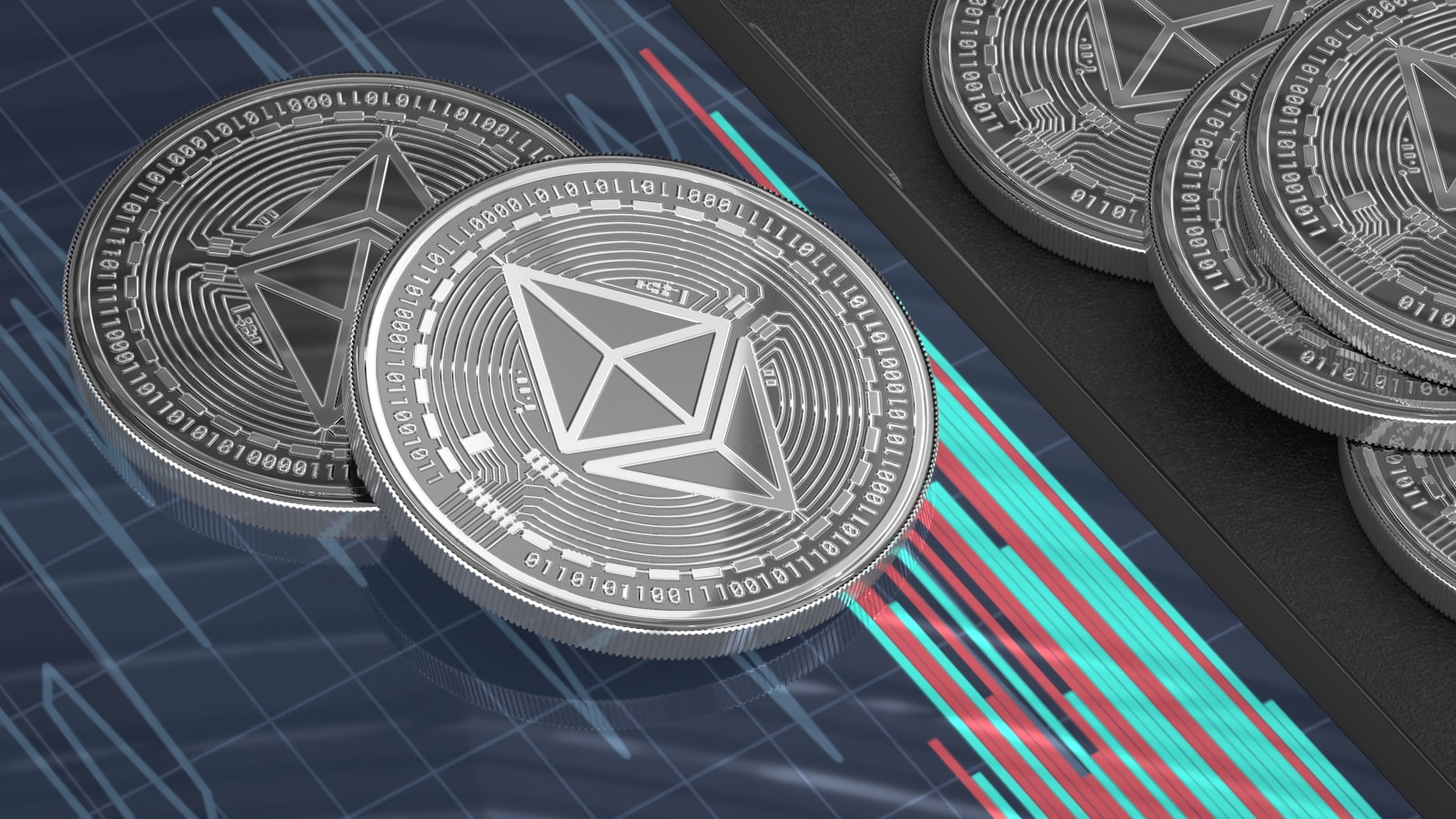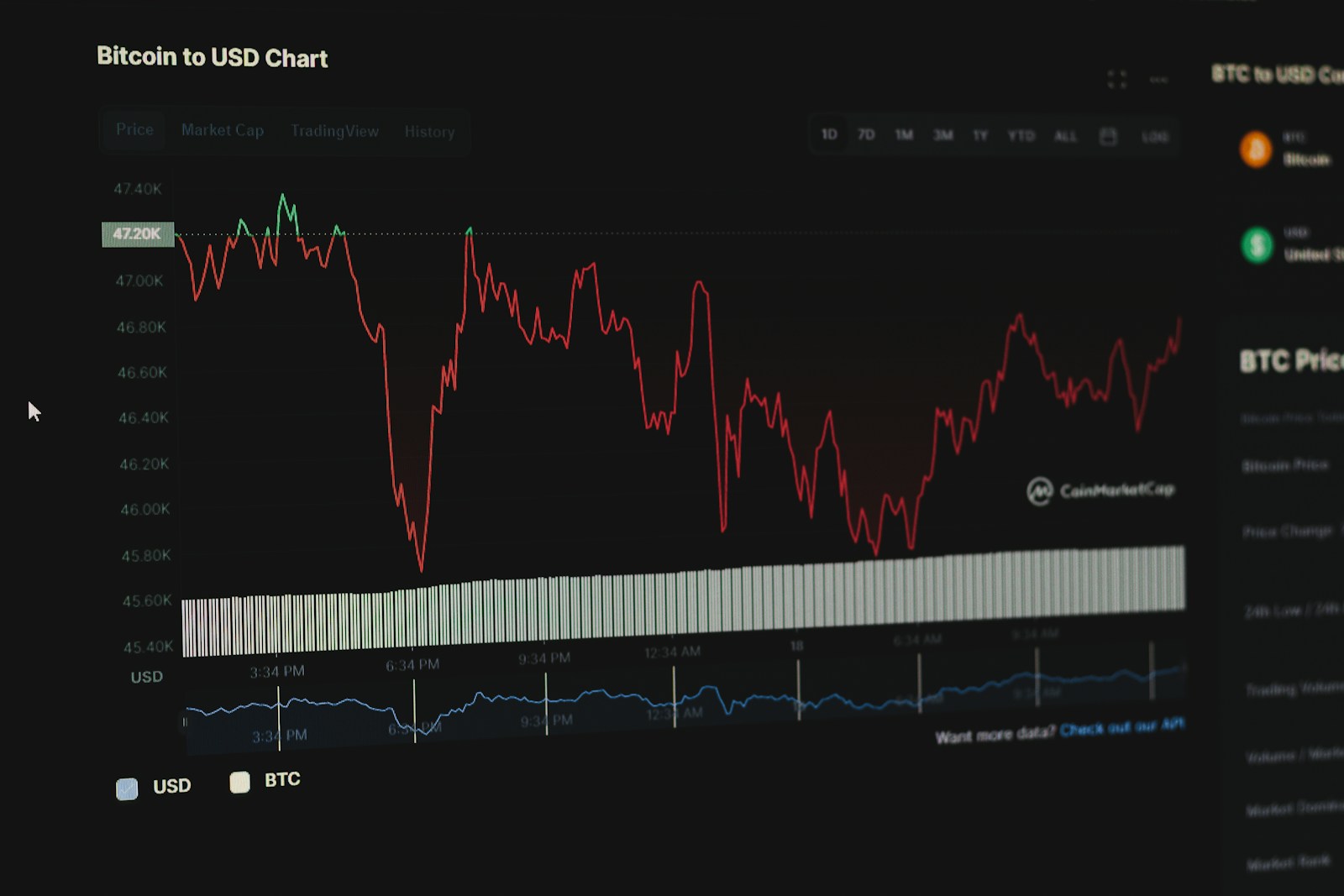
Matic offers a proven solution to the throughput limitations of Ethereum by employing sidechains that process transactions off the main chain. This approach significantly boosts transaction speed, reducing average confirmation times from over a minute on Ethereum’s base layer to just a few seconds. By shifting the transactional load to these parallel chains, Matic effectively alleviates congestion and gas fee spikes without compromising security.
The architecture relies on a multi-chain framework that operates as an extension rather than a replacement of Ethereum’s primary ledger. These auxiliary chains maintain compatibility with smart contracts and decentralized applications (dApps), allowing developers to deploy scalable solutions while leveraging Ethereum’s robust ecosystem. Layer2 protocols integrated within this design facilitate faster finality and higher throughput, reaching up to 7,000 transactions per second compared to Ethereum’s current ~15 TPS.
Recent market trends show growing adoption of this scaling method among DeFi platforms and NFT marketplaces seeking lower costs and enhanced user experience. For instance, several popular projects have migrated key functionalities onto these secondary chains, achieving cost reductions upwards of 90% and maintaining seamless interoperability with mainnet assets. Could this be the definitive path for mass adoption in decentralized finance?
Polygon network: scaling Ethereum with sidechains [DeFi & Protocols defi]
For projects aiming to enhance transaction throughput and reduce fees on the main Ethereum blockchain, leveraging layer 2 solutions such as Polygon’s architecture offers a practical approach. By utilizing multiple parallel chains that operate independently yet connect back to the Ethereum mainnet, this infrastructure significantly improves processing speed and lowers congestion. The native token MATIC fuels operations within this ecosystem, incentivizing validators who secure transactions and maintain consensus.
Through its multi-chain framework, the platform addresses key bottlenecks in decentralized finance (DeFi) protocols that rely heavily on frequent interactions with smart contracts. For example, popular DeFi applications like Aave and SushiSwap have integrated with this system to provide users faster execution times without sacrificing security guarantees inherent to Ethereum’s base layer. This move supports scalable DeFi environments where liquidity pools can expand without facing excessive gas costs.
Technical Foundations and Transaction Efficiency
The underlying structure employs an adapted Proof-of-Stake consensus mechanism across auxiliary chains, enabling block finality within seconds compared to Ethereum’s average of over 13 seconds per block. This results in handling thousands of transactions per second (TPS), a marked improvement over the roughly 15 TPS capacity of Ethereum’s main chain. Additionally, batch processing bundles multiple user operations into single commitments anchored on the primary ledger, effectively reducing data load and enhancing throughput.
This configuration also allows developers to deploy customized virtual machines compatible with Solidity-based smart contracts while benefiting from lower latency. One notable case is Decentraland, which harnesses this infrastructure for real-time asset trades within its metaverse marketplace–showcasing how gaming and NFT platforms capitalize on these performance gains.
Security Trade-offs and Interoperability Challenges
Despite evident advantages in speed and cost-efficiency, reliance on supplementary chains introduces nuanced security considerations. Validators operating off-mainnet require robust incentive alignment to prevent malicious behavior or collusion risks. While checkpoints submitted periodically to the primary blockchain enhance trust assumptions, some critics argue that decentralization levels differ compared to executing all computations directly on Ethereum’s core network.
Interchain communication protocols remain an active area of development aimed at seamless asset transfers between these auxiliary environments and other ecosystems like Binance Smart Chain or Avalanche. Current implementations use bridge contracts secured through cryptographic proofs; however, cross-chain vulnerabilities observed in recent exploits urge cautious integration for mission-critical DeFi services.
Recent Market Trends Impacting Adoption
The current macroeconomic climate characterized by fluctuating gas prices has prompted increased interest in scalable alternatives supporting high-frequency trading strategies and yield farming activities. Data from Q1 2024 indicates a surge exceeding 30% in daily active addresses interacting via this modular solution compared to prior quarters. Such momentum suggests growing confidence among retail participants as well as institutional actors deploying algorithmic trading bots requiring rapid settlement finality.
Ecosystem Growth Through Protocol Integration
The expanding suite of DeFi protocols adopting this layered architecture underlines its practical utility beyond theoretical benchmarks. Lending platforms like Compound now enable collateralized loans processed off-chain before final settlement occurs on Ethereum’s main ledger. Similarly, automated market makers benefit from reduced slippage due to faster order book updates made possible by sub-second transaction cycles.
- Aave’s deployment saw a 25% reduction in liquidation events attributed to improved price oracle responsiveness enabled by quicker data feeds.
- SushiSwap reported a 40% increase in swap volume during peak periods after migrating part of their liquidity pools onto these auxiliary chains.
- NFT marketplaces integrated such mechanisms witnessed significant decreases in minting delays – critical for time-sensitive digital collectibles drops.
Outlook and Strategic Recommendations for Developers
When designing new decentralized applications targeting scalability without compromising security assurances inherent in Ethereum’s protocol design, leveraging modular extensions governed by MATIC staking remains advisable. Prioritize thorough audits of bridging components alongside rigorous stress-testing under simulated high-load scenarios before production deployment. Considering interoperability frameworks emerging around Cosmos SDK or Polkadot parachains may further diversify risk profiles linked with single-layer dependencies.
Ultimately, balancing speed enhancements against potential attack vectors requires continuous monitoring as adversaries evolve tactics exploiting cross-chain bridges or validator collusion attempts. Staying informed about protocol upgrades and participating actively within governance forums helps maintain resilience amid rapidly shifting conditions affecting decentralized finance infrastructures globally.
How Polygon Sidechains Reduce Gas Fees
Utilizing auxiliary blockchains attached to Ethereum significantly lowers transaction costs by offloading activity from the main ledger. These parallel chains process transactions independently, which reduces congestion and minimizes on-chain computational demands. As a result, users benefit from substantially lower fees compared to executing all operations directly on Ethereum’s base layer.
The reduction in expenses is achieved through enhanced throughput and optimized data handling. By batching multiple transactions and settling them collectively on Ethereum, sidechain solutions decrease the frequency and complexity of interactions with the primary chain. This approach enables fee savings that can reach up to 90% under typical network load conditions.
Technical Mechanisms Behind Cost Efficiency
One key factor is the architecture that supports parallel validation and execution of smart contracts outside Ethereum’s main ledger. The independent consensus mechanism used by these auxiliary chains allows faster finality, often within seconds rather than minutes, which cuts operational overhead dramatically. Furthermore, this structure employs compressed proofs or periodic checkpoints submitted back to Ethereum, maintaining security while drastically reducing gas consumption per transaction.
Concrete case studies illustrate these effects clearly. For instance, decentralized applications migrating their token transfers or NFT minting functions have reported average gas fees plummeting from over 50 gwei on Ethereum’s mainnet to approximately 5 gwei when leveraging such secondary ledgers. This represents not only cost-effectiveness but also improved user experience due to reduced waiting times.
Moreover, real-time analytics confirm that during periods of high demand–such as NFT drops or DeFi yield farming spikes–the disparity in fees between the primary blockchain and its adjunct chains widens considerably. Such scalability layers absorb surges without proportionally increasing transactional costs, preserving economic viability for smaller-scale participants who would otherwise be priced out.
While some critics argue about potential trade-offs related to decentralization or security guarantees inherent in sidechain models, ongoing protocol enhancements aim to balance these concerns effectively. Layer-2 frameworks continue evolving toward stronger interoperability and trust minimization, ensuring that users retain confidence while capitalizing on reduced expenditure and accelerated throughput capabilities.
Integrating DeFi Protocols on Polygon
Deploying decentralized finance applications on the Matic ecosystem significantly reduces transaction costs compared to base-layer solutions. Average fees on this platform often measure in fractions of a cent, contrasting sharply with the often prohibitive gas prices experienced on the primary chain during network congestion. This economic efficiency enables developers to design more complex smart contracts and high-frequency trading strategies without worrying about prohibitive operational expenses.
The architecture relies on a modular framework combining commit chains anchored periodically to the main ledger, thus preserving security while offloading computational load. This approach allows liquidity pools and automated market makers such as Aave or Curve variants adapted for this environment to maintain near-instant finality times–typically under three seconds–enhancing user experience and enabling real-time arbitrage opportunities previously constrained by slower throughput.
Technical Considerations and Performance Metrics
Integration requires careful management of cross-ledger token bridges that synchronize asset balances between layers. While the two-way bridge mechanism ensures interoperability, delays ranging from 7 to 30 minutes in asset transfers necessitate thoughtful UX design to mitigate withdrawal latency concerns. Furthermore, developers must optimize contract code to align with the underlying consensus model based on Heimdall and Bor validators, which differ from proof-of-work consensus used elsewhere.
A recent case study involving a yield farming protocol migration demonstrated a 90% reduction in average transaction fees–from approximately $15 down to $1.50–alongside an increase in daily active users by 40%. These figures illustrate how lower operational costs combined with faster settlement times can drive adoption in competitive DeFi markets. However, risks like validator centralization and cross-chain security vulnerabilities remain topics requiring continuous scrutiny.
Security trade-offs in Polygon scaling
Utilizing sidechains to increase transaction throughput inevitably introduces distinct security compromises compared to the base layer. The Matic chain, operating as a separate blockchain compatible with Ethereum, relies on its own set of validators rather than Ethereum’s mainnet consensus mechanism. This design enhances speed and reduces fees substantially–transactions often cost fractions of a cent versus several dollars on the main chain–but simultaneously shifts trust assumptions away from Ethereum’s robust proof-of-stake security. Consequently, assets and data processed off the primary ledger inherit increased risk exposure related to validator honesty and potential collusion.
In practice, this means that while users experience higher throughput and faster finality–block times around 2 seconds compared to Ethereum’s roughly 13 seconds–they accept a different security model that is less decentralized. Validators on these secondary chains often have economic incentives calibrated differently than Ethereum’s extensive staking pool, which currently secures over 13 million ETH worth billions of dollars. The smaller validator set can lead to vulnerabilities such as censorship or double-spending attacks if malicious actors gain sufficient control. Therefore, projects must weigh whether improved operational efficiency justifies reliance on a less battle-tested consensus.
Technical nuances affecting trust boundaries
The fundamental trade-off lies in the separation of execution environments: sidechains process transactions independently and periodically commit checkpoints back to the root chain for final settlement or dispute resolution. However, unlike rollups that inherit full security guarantees by posting calldata directly on Layer 1, these chains maintain their own state histories and consensus rules. A breach at the validator level could result in fraudulent state transitions undetectable until challenge periods expire or withdrawals are attempted. For instance, an incident in late 2021 exposed potential attack vectors when misbehaving validators temporarily stalled token transfers before being penalized.
Moreover, fee structures reflect this risk profile. While network costs are typically under $0.01 per transaction due to reduced load and optimized gas usage on Matic-compatible chains, users pay indirectly through lower assurance levels and longer withdrawal delays back to Ethereum–sometimes up to seven days–to safeguard against fraudulent exit attempts. This latency contrasts sharply with instant transaction finality experienced within centralized exchanges but remains a necessary compromise given decentralization goals.
- Example: The integration of Plasma bridges introduced additional complexity; although enhancing throughput by batching operations off-chain, it required careful monitoring for exit fraud during withdrawal windows.
- Case study: During Q3 2022, multiple DeFi protocols migrated liquidity onto Matic-based chains leveraging sidechain capacities but implemented layered multisig governance models to mitigate validator-related risks.
The velocity gains achieved cannot be overlooked: average transaction speeds exceed 65 TPS (transactions per second), far surpassing Ethereum’s current base capacity near 15 TPS without congestion relief mechanisms. Yet these performance benefits remain balanced against trust concessions inherent in validator diversity and checkpoint finalization cadence. Enterprises aiming for compliance-sensitive applications often prefer rollup solutions despite marginally higher fees because they retain stronger ties to Layer 1 validation.
This divergence highlights why developers must align application requirements with appropriate scaling layers based on sensitivity to security versus speed trade-offs. As market dynamics evolve–with fluctuating gas prices pushing demand toward affordable alternatives–the ecosystem increasingly adopts hybrid approaches combining plasma bridges, optimistic rollups, and sidechains tailored for specific use cases.
A critical question remains: can advancements in cross-chain validation schemes and zero-knowledge proofs reconcile these disparities? Current research explores integrating zk-rollup proofs into secondary frameworks aiming to enhance trust guarantees without sacrificing throughput or cost benefits intrinsic to Matic-like implementations.
Bridging assets between Ethereum and Polygon
To transfer tokens between the Ethereum mainnet and the Polygon chain, users must utilize specialized bridges that facilitate cross-platform communication. These bridges lock assets on one ledger while minting equivalent tokens on the other, ensuring a secure and trust-minimized transfer process. For example, the official PoS Bridge supports ERC-20, ERC-721, and ERC-1155 standards, enabling seamless movement of various asset types. Transaction finality depends on checkpoint intervals; typically, a withdrawal from the secondary platform back to the main network takes approximately 7 minutes due to consensus confirmations.
Transaction fees are a critical consideration in asset bridging. The cost of moving tokens directly on Ethereum can exceed $50 during peak congestion times, whereas transferring assets through Matic’s infrastructure reduces fees dramatically–often to mere cents per transaction. This difference stems from the underlying consensus mechanisms: Ethereum relies on proof-of-stake with higher gas prices driven by network demand, while Matic employs a commit-chain model optimized for throughput and cost-efficiency without sacrificing security.
Technical mechanisms behind cross-ledger asset transfers
Bridges operate by locking original tokens in a smart contract on one ledger and issuing wrapped equivalents on another. This process requires robust cryptographic proofs and validator sets to prevent double-spending or fraud. The Matic bridge uses a set of validators who periodically submit checkpoints representing state commitments to the main chain, anchoring sidechain activity securely within Ethereum’s consensus framework. Such architecture leverages Plasma-like constructions combined with commit-chain finality to balance speed and security.
Speed improvements become evident when interacting with decentralized applications across chains. While executing transactions natively on Ethereum may take up to 15 seconds per block confirmation under average conditions, operations routed via Matic confirm within 2–3 seconds due to faster block production times (approximately 2 seconds per block). This acceleration enhances user experience significantly in DeFi protocols where rapid trade execution or liquidity movements are essential.
Case studies reveal practical impacts: A popular NFT marketplace integrated this bridging technology enabling creators to mint assets at lower costs and buyers to transact swiftly without enduring Ethereum’s high gas fees. Additionally, stablecoin transfers benefit from reduced latency and expense when moved through this layered solution compared to direct ERC-20 swaps on Ethereum alone. Given current market volatility and network congestion patterns observed throughout 2023–2024, leveraging such interoperability tools remains strategically advantageous for developers and end-users alike.
Optimizing Smart Contracts for Polygon
To maximize performance on Matic’s environment, developers should prioritize reducing on-chain computations by offloading complex logic to off-chain or layer 2 solutions. Minimizing expensive state changes and storage operations directly cuts down transaction fees and improves execution speed. For example, batching multiple user interactions into a single contract call decreases the number of gas-consuming events, which is critical given current fee structures averaging $0.01 to $0.03 per transaction on this platform.
Efficient use of event logs instead of persistent storage can further optimize costs and enhance network throughput. Data-heavy applications benefit from emitting indexed events that external services listen to, rather than storing large datasets on-chain. Case studies such as Aavegotchi demonstrate how event-driven architectures maintain responsiveness while limiting on-chain footprint, enabling fast finality within seconds thanks to the high throughput afforded by the underlying sidechain framework.
Technical Strategies for Contract Optimization
Leveraging native tools like Solidity optimizer settings and modular contract design significantly impacts gas consumption. Splitting monolithic contracts into smaller, reusable components reduces deployment size and facilitates upgrades without redeploying entire systems. This modularity aligns well with Matic’s validation model, where quicker consensus rounds translate into faster state transitions across nodes.
- Implement meta-transactions: Allows users to interact with contracts without directly paying gas fees, improving UX while maintaining security.
- Use fixed-size data types: Employing uint256 instead of dynamic arrays when possible decreases computational overhead.
- Avoid redundant calculations: Cache intermediate results in memory during function calls rather than recalculating values multiple times.
The speed advantage offered by these techniques is evident in decentralized exchanges operating atop this layer 2 solution; platforms like QuickSwap report sub-2-second transaction finality alongside minimal fees, contrasting starkly with base-layer alternatives experiencing congestion delays upwards of minutes during peak demand.
An additional optimization leverages cross-contract calls sparingly due to their inherently higher gas costs and potential reentrancy risks. Instead, consolidating related logic within single contracts or employing low-level call patterns judiciously balances functionality with cost-efficiency. As network adoption grows amid fluctuating market conditions, focusing on scalable architecture ensures resilience against sudden spikes in usage while keeping operational expenses predictable for end-users and developers alike.
Conclusion: Optimizing Multi-Chain DeFi with Polygon’s Architecture
Utilizing the Matic framework significantly improves throughput and transaction finality by offloading computation and data availability from Ethereum’s base layer onto auxiliary chains. This approach decreases gas fees by over 90% in practice, while maintaining robust security guarantees through periodic checkpoints anchored back to the main ledger. For DeFi protocols seeking rapid composability and user-friendly experiences, such infrastructure offers compelling advantages in operational speed and cost-efficiency.
Recent deployments demonstrate sustained network performance exceeding 7,000 transactions per second under peak conditions–far surpassing Layer1 constraints. Projects like Aave and SushiSwap have already integrated these supplementary chains to diversify liquidity pools and minimize slippage across multiple ecosystems. As interoperability protocols mature, cross-chain arbitrage strategies will benefit from reduced latency and enhanced atomicity within this environment.
Key Technical Implications and Future Directions
- Decentralized Validation: The hybrid consensus model balances decentralization with scalability by leveraging Plasma-based fraud proofs alongside Proof-of-Stake validators, ensuring swift block confirmations without compromising on security assumptions.
- Interoperable Asset Bridges: Seamless token transfers between native ledgers enable multi-vault yield farming setups that dynamically adjust exposure based on real-time market signals.
- Layer2 Composability: Smart contracts deployed on these auxiliary layers can interact natively, reducing reliance on slow or expensive cross-layer messaging protocols.
The evolution towards modular blockchain ecosystems positions Matic as a foundational element in next-generation finance stacks. Anticipated enhancements include zero-knowledge rollup integrations to further compress calldata and bolster privacy features. Additionally, adaptive fee markets are expected to optimize resource allocation dynamically, responding to fluctuating demand patterns more efficiently than static gas models.
In conclusion, leveraging this scaling solution enables DeFi architects to architect resilient multi-chain portfolios that capitalize on speed improvements without forfeiting Ethereum-grade security. This synergy paves the way for increasingly complex financial instruments capable of operating at scale, fostering innovation amid ongoing network congestion challenges worldwide.







